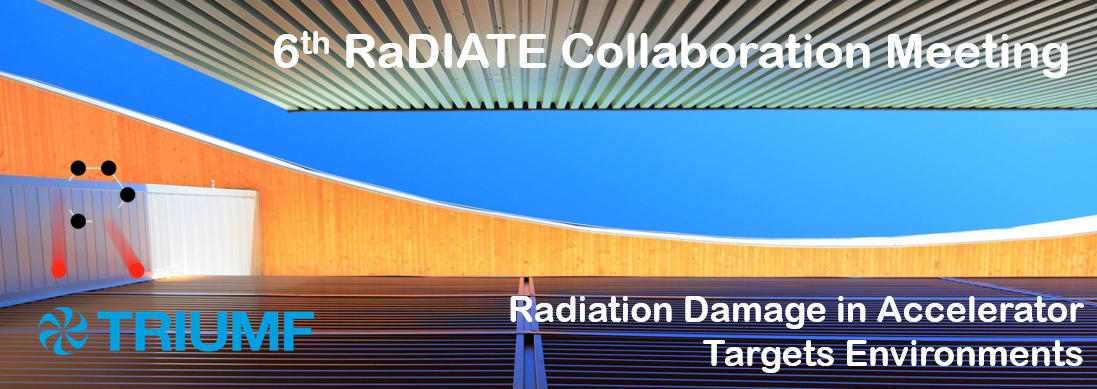Speaker
Yosuke Iwamoto
(Japan Atomic Energy Agency)
Description
The displacement per atom (dpa) value is widely used for the index of radiation damage in materials under high energy proton irradiation. It is possible to calculate dpa values using the screened Coulomb scattering theory for incident proton-nucleus collisions and the nuclear reaction model for nuclear reaction product-nucleus collisions in the high-energy region (>10 MeV). For defect production, it is the number of recoils weighted by the damage energy produced in each recoil that is most important. This quantity is determined by “weighed” the recoil spectra by the damage energy produced in each recoil. However, the damage energy spectra have not been investigated yet for the proton energy range from several MeV to hundred GeV, where recoil is regarded as nuclear reaction product. The contribution of each nuclear reaction product to the total dpa cross section has not been studied yet, although many kinds of nuclear reaction products are produced by nuclear reactions with increasing incident proton energy. In this work, we calculated damage energy spectra and dpa cross sections of all nuclear reaction products under high energy proton irradiation on tungsten with the energy range from 10 MeV to 120 GeV using the Particle and Heavy Ion Transport code System (PHITS).
The damage energy spectrum of target nucleus includes the nuclear elastic scattering component in the low-energy part and the nuclear inelastic scattering component in the high-energy part. The average damage energy of tungsten was 63.7 keV for 100 MeV proton, 76.9 keV for 400 MeV, 38.3 keV for 1 GeV and 28.7 keV for 10 GeV, respectively. The damage energy spectrum of others include inelastic component only. For example, the average damage energy of lutetium produced by inelastic scattering was 628 keV for 100 MeV proton, 895 keV for 400 MeV, 872 keV for 1 GeV, 637 keV for 10 GeV, and 587 keV for 120 GeV, respectively. Note that the damage energy to the lattice atom is always smaller than the kinetic energy of nuclear reaction products because electric energy lost is subtracted in the displacement model. The damage energy of nuclear reaction product increased with proton energy up to around 1 GeV, but it decreased slightly with incident proton energy above 1 GeV. On the other hands, the number of nuclear reaction products increased with proton energy. In consideration of the relationship between the damage energy and the number of nuclear reaction products, the total dpa cross section of tungsten increased with the proton energy range from 400 MeV to 1 GeV and be almost constant over 1 GeV. The experimental data of total dpa cross sections indicated same trend with calculated results for the proton energy below 2 GeV.
In this presentation, we will also introduce our experimental plan for measurement of dpa cross sections with 120 GeV protons at Fermi National Accelerator Laboratory (FNAL).
Primary author
Yosuke Iwamoto
(Japan Atomic Energy Agency)
Co-authors
Hiroki Iwamoto
(J-PARC/JAEA)
Katsuya Yonehara
(Fermi National Accelerator Laboratory)
Makoto Yoshida
(KEK)
Mr
Patrick Hurh
(Fermi National Accelerator Laboratory)
Shin-ichiro Meigo
(J-PARC/JAEA)
Shintaro Hashimoto
(Japan Atomic Energy Agency)
Tiziana Spina
(Fermi National Accelerator Laboratory)

